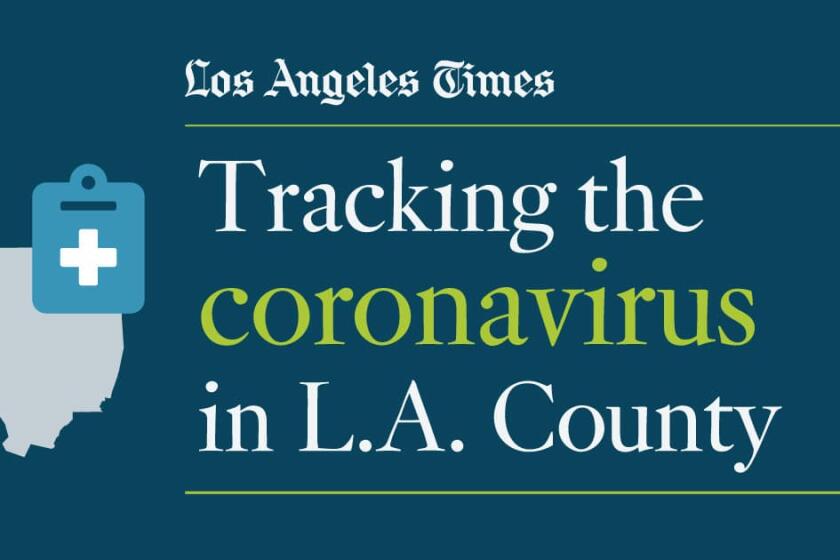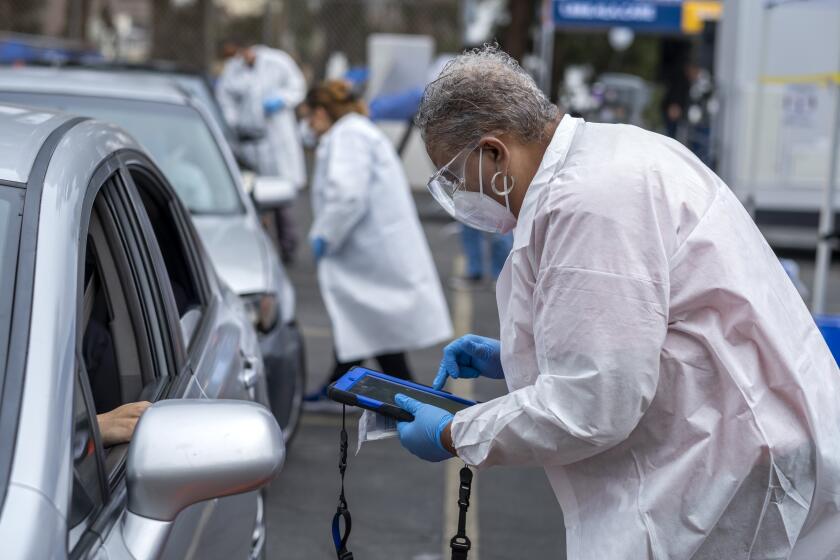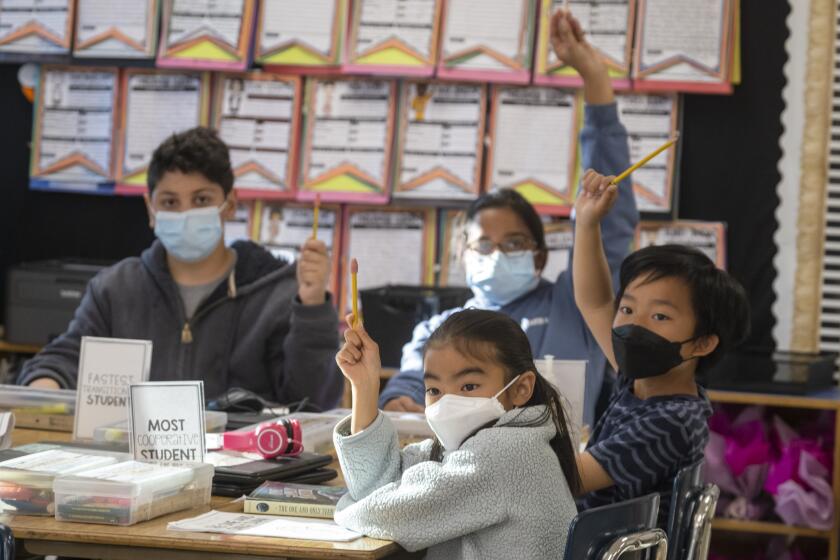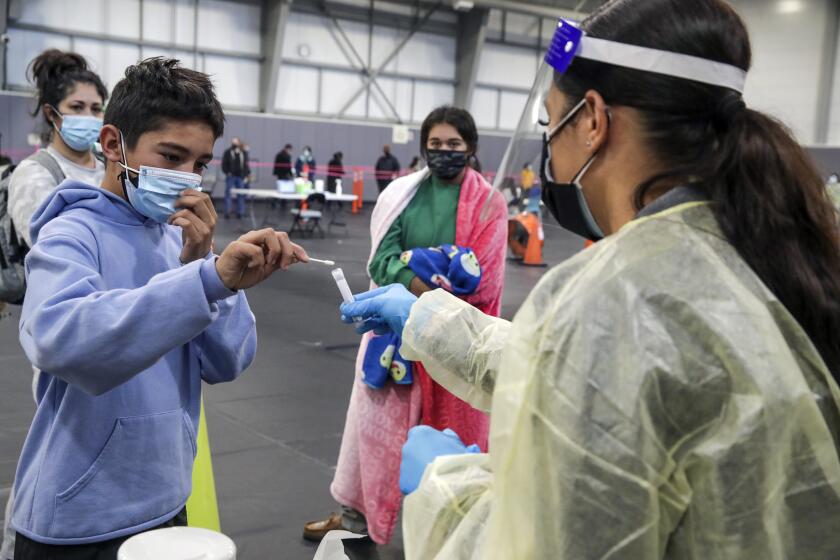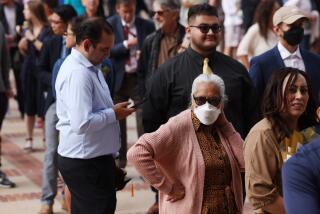Coachella, spring break, Easter and rising coronavirus: How to stay safe
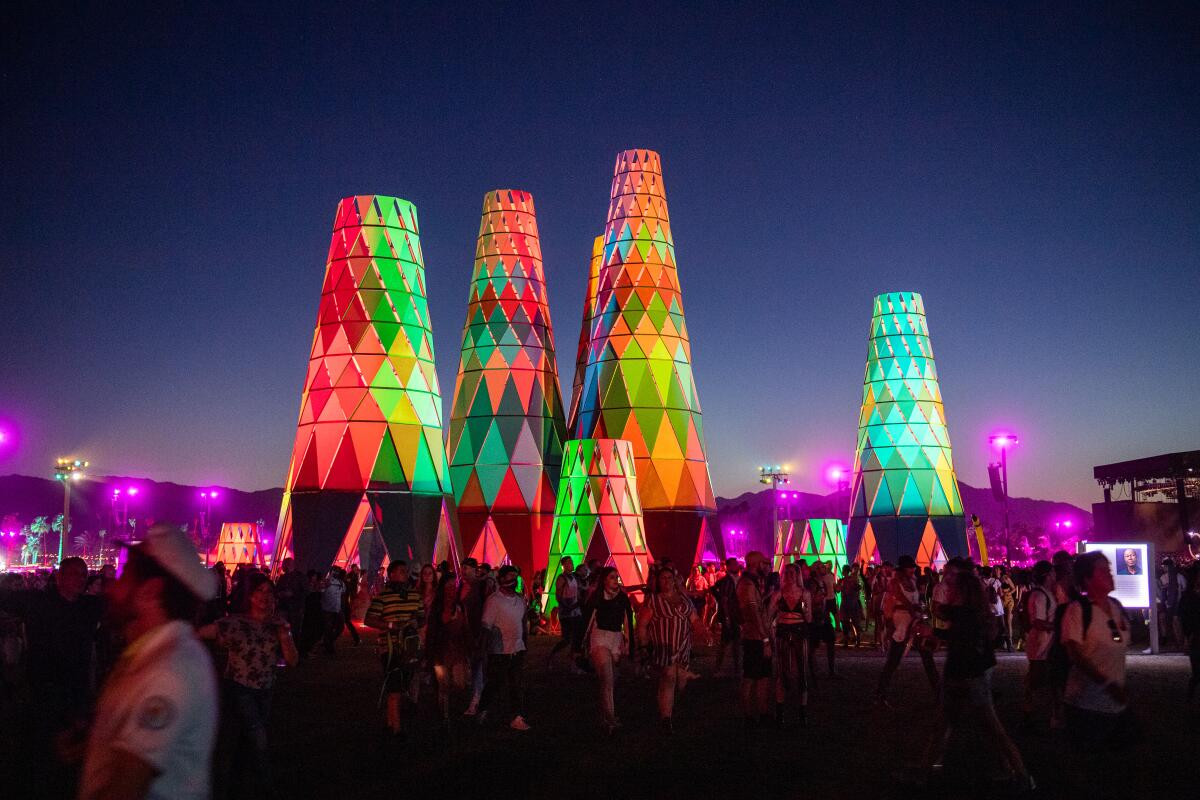
A recent uptick in cases is fueling some concern about the trajectory of the coronavirus in California, especially as April brings both a bustling holiday season — including Easter, Ramadan and Passover — and a social calendar packed with spring break travel plans and major events like the Coachella and Stagecoach music festivals.
After plummeting from the all-time-highs seen during last winter’s surge, the number of newly reported coronavirus infections is rising modestly in some parts of the state, including Los Angeles County. The numbers remain fairly low, and officials said it’s far from clear the state will see another major spike.
But they are urging people to be cautious as they travel and take part in activities.
L.A. County Public Health Director Barbara Ferrer this week urged people to “do our very best to make use of the powerful tools at hand, vaccinations, boosters, testing, and masking, to keep ourselves and those most vulnerable to severe illness, as safe as possible.”
Data show that for the seven-day period that ended Monday, an average of 960 new cases were reported daily countywide, which pencils out to 67 cases a week for every 100,000 residents. That’s up 23% from the previous week.
There are no indications yet that officials are planning to reimpose the sort of mandates that were lifted earlier this year as cases fell. Concert promoter Goldenvoice has already rescinded all COVID-19 safety protocols for the Coachella and country-themed Stagecoach festivals that will be held later this month in Indio.
Here’s what you need to know:
What do the latest numbers show?
Data show that for the seven-day period that ended Monday, an average of 960 new cases were reported daily in L.A. County, which equates to 67 cases a week for every 100,000 residents. That’s up 23% from the previous week, when L.A. County reported an average of 783 cases a day.
Caseloads of this magnitude remain well shy of the tallies seen during the Omicron surge. In mid-January, L.A. County was reporting 42,000 new coronavirus cases a day.
The latest maps and charts on the spread of COVID-19 in Los Angeles County, including cases, deaths, closures and restrictions.
For the weekly period that ended Thursday, California was averaging about 2,800 cases a day, or 50 cases a week for every 100,000 residents, up 9% over the prior week.
Orange County’s case rate is up 12% over the prior week — to about 134 cases a day, or 30 a week for every 100,000 residents,
San Francisco, which now has one of California’s highest case rates, on Thursday was recording about 127 cases a day, or 102 cases a week for every 100,000 residents, a 6% increase over the prior week.
A coronavirus case rate of 50 or more cases a week for every 100,000 residents is considered substantial, while a rate of 100 or more is considered high.
Early estimates as noted by the World Health Organization say XE may be 10% more transmissible than BA.2.
What do experts think comes next?
Some experts are optimistic that the case numbers so far offer glimmers of hope that this spring will not bring a second Omicron surge on the magnitude of those seen elsewhere — such as Britain, where hospitals have once again come under strain.
Dr. Eric Topol, director of the Scripps Research Translational Institute in La Jolla, tweeted Saturday that “it’s clear that wave 6 (BA.2), yet still in the works, will not resemble” the fifth surge of the pandemic, or last winter’s Omicron surge.
But Myoung Cha, chief strategy officer for San Francisco-based Carbon Health, disagreed with “confident takes … that this surge won’t be big.” He noted many people this year are self-diagnosing with at-home tests — the results of which are not reliably reported to the government.
In a round of interviews with morning network shows, Dr. Ashish Jha, the incoming White House COVID-19 Response Coordinator, said he’s “not overly concerned right now” about the rise in cases nationally.
An increase in coronavirus cases at schools is occurring in part because of the lifting of indoor mask requirements, L.A. County health officer says.
“Case numbers are rising. … We were expecting this, because we saw this in Europe a few weeks ago,” Jha said on NBC’s “Today” show. “But the good news is: We’re coming off of some very low infection numbers. Hospitalizations right now are the lowest they have been in the entire pandemic.
“So we’ve got to watch this very carefully. Obviously, I never like to see infections rising, I think we’ve got to be careful, but I don’t think this is a moment where we have to be excessively concerned,” Jha said.
Where does BA.2 fit in here?
There is growing concern about the proliferation of BA.2, an Omicron subvariant estimated to be 30% to 60% more contagious than the earlier version.
In L.A. County, the coronavirus case rate hit a post-winter-surge low of about 609 cases a day from March 18 to 24 — about two weeks after the region ended its universal mask requirement for indoor public spaces.
The countywide case rate has ticked upward since then, a development officials have said is likely fueled by a combination of waning immunity, the loosening of masking rules and the spread of BA.2.
Free coronavirus testing is reduced in L.A. County despite rising cases
What about XE?
According to early estimates noted by the World Health Organization, another Omicron subvariant — dubbed XE — may be 10% more transmissible than BA.2.
XE was first detected in Britain on Jan. 19, the WHO said. And more than 700 cases of XE have been reported in Britain, with more than 600 of them in England, according to British authorities.
Ferrer said last week that there have not been significant numbers of the XE subvariant in countries outside Britain. To date, there have been only three cases of XE reported in the U.S., and none in California, she said.
It’s too soon to say, however, whether XE will become a household name. The British government has also noted that data showing XE’s growth rate advantage over BA.2 have not remained consistent, so more data will be needed to assess XE’s likely trajectory.
Preliminary data so far suggest XE “is going to be easier to catch,” said UC San Francisco infectious diseases expert Dr. Peter Chin-Hong in an interview last week, although people who are vaccinated and boosted should have a relatively lower risk of suffering hospitalization and death, as is the case with other Omicron subvariants.
“But if XE becomes more prominent in this country, it does add a little bit of fire for people to get boosted overall. And it adds a little fire maybe for the oldest people in our population to maybe get their second booster,” Chin-Hong said.
Rising coronavirus cases in the U.K. may portend what lies ahead for other countries as they ease restrictions.
What about schools?
The number of K-12 school coronavirus outbreaks is rising in Los Angeles County after many schools lifted mask-wearing requirements.
Officials said last week there were 14 new outbreaks in schools for the week that ended Thursday. For the previous week, there were four. The latest figure is the highest such number since early February, during the fall-and-winter Omicron surge. Twelve were at elementary schools and two at high schools.
One of the outbreaks, at a high school, has involved dozens of infected people. It was initially reported to have 26 coronavirus cases linked to one another; the outbreak has since grown to 60 cases in that school.
More to Read
Sign up for Essential California
The most important California stories and recommendations in your inbox every morning.
You may occasionally receive promotional content from the Los Angeles Times.

